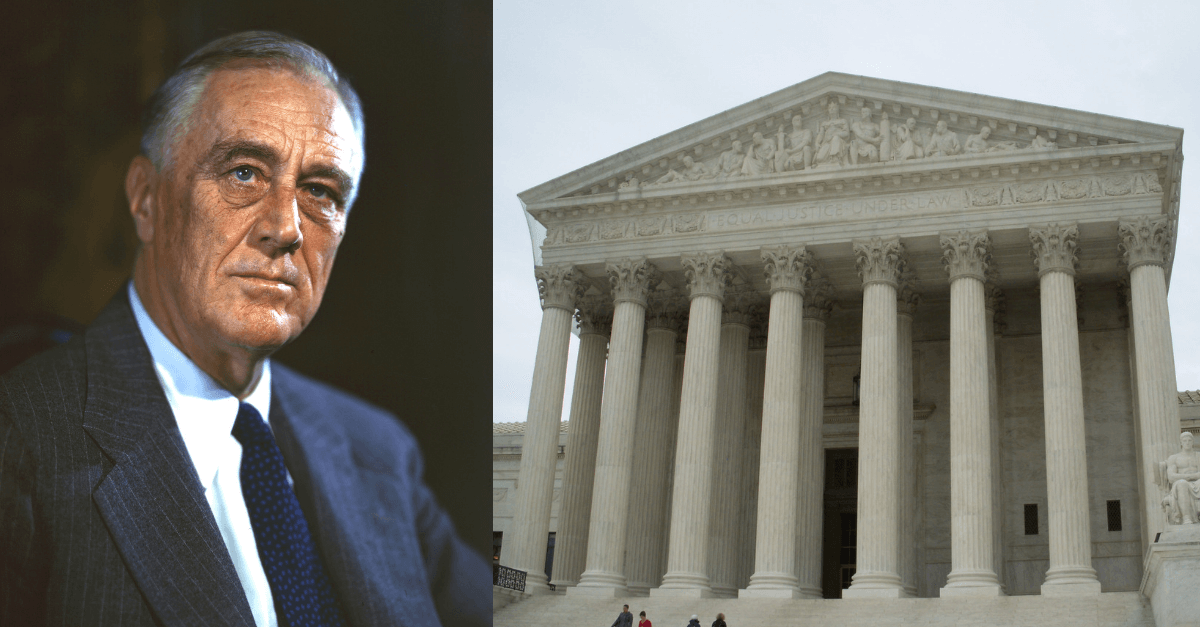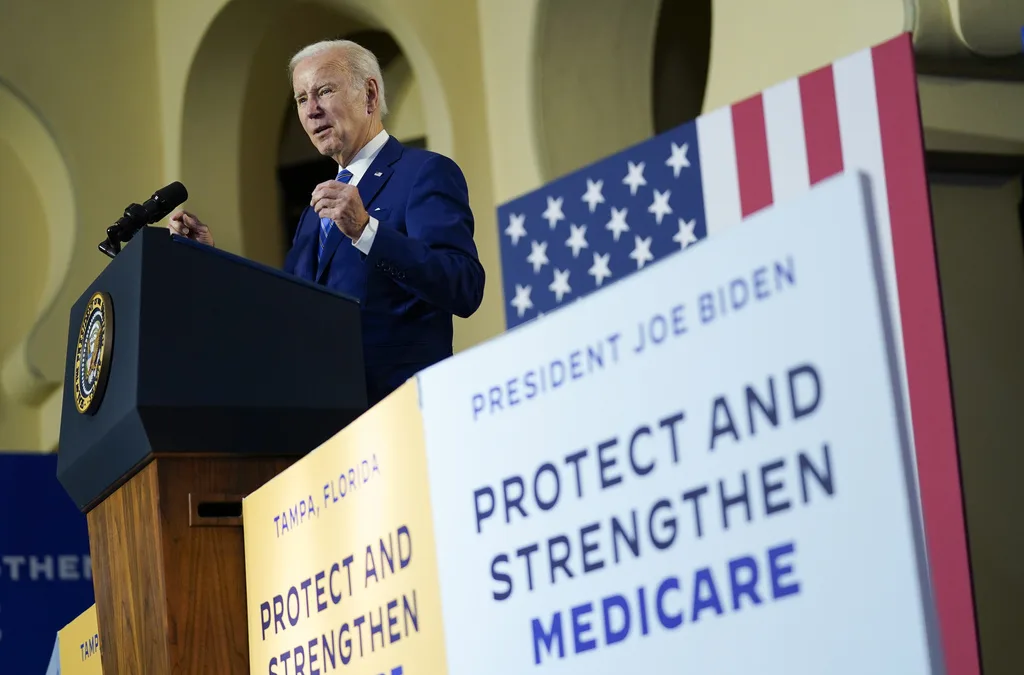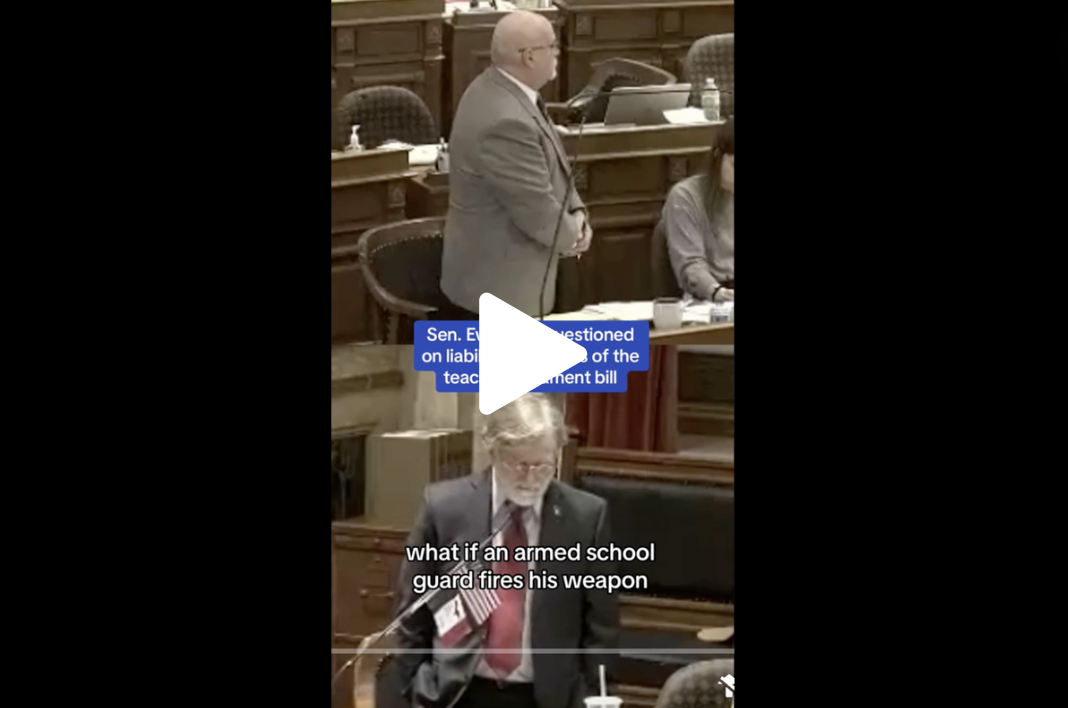
By 1935, the New Deal was helping the American people and economy bounce back from the disaster of the stock market crash of 1929.
National programs were putting people to work, building infrastructure like bridges, hospitals and schools and expanding access to electricity. The New Deal was popular and well-loved.
In May 1935, it suffered its first losses in the Supreme Court. The biggest blow declared Roosevelt’s National Industrial Recovery Act, a key piece of the New Deal, unconstitutional.
Roosevelt wasn’t happy.
The first reaction many people have when 2020 candidates talk about expanding the Supreme Court tends to be about Roosevelt’s next move: trying to pack the Court with justices who were more friendly to the New Deal.
Roosevelt’s idea failed in Congress and cost him popularity with the American public. Many people assert that would happen again today, and it’s too big a political risk to pursue.
But that knee-jerk reaction neglects some of the reasons why Roosevelt’s plan failed. In 1937, public confidence in the Court was higher, Roosevelt’s approach to changing the Court was seen as a power grab and the plan he proposed blatantly targeted unfriendly justices.
Public Opinion
After three prior Republican administrations, the Supreme Court was divided into liberal and conservative factions, and there was disagreement among the justices about the Court’s role in government and the judicial philosophy they should follow.
Roosevelt anticipated having judicial issues because of how expansive his programs were, but the New Deal met success in the Supreme Court until 1935 and ’36.
Today, the Supreme Court has similar ideological differences, and Gallup reports that, as of July 2018, American confidence in the Court sits at 37 percent.
The current argument for expanding the Court is that the nominating process has become inflammatory and intensely political, the Court itself has been shaped into a partisan arena and the politicization has affected the public view of its legitimacy. Democrats argue that Republicans have unfairly skewed the Court after essentially stealing a pick from a Democratic president.
[inline-ad id=”0″]
Public confidence in the Supreme Court was higher in 1937, and reactions to Roosevelt’s plan were mixed. The president headed off some criticism by personally advocating for the idea and dedicating his ninth fireside chat to the matter.
In March 1937, Gallup polls showed 47 percent of adults were in favor of the expansion plan, but by June, support only averaged about 39 percent.
The Politics
Aside from public perception of the Supreme Court, another reason for Roosevelt’s failure was that he didn’t consult enough with members of Congress, the branch with the power to change the Supreme Court, before announcing his plan.
Roosevelt didn’t introduce the bill that would expand the Court until February 1937, after winning re-election in 1936 and sweeping victories for Democrats generally. But Roosevelt had been talking to advisors about reshaping the Court in his favor even prior to his first term in 1933.
Some Democratic members of the House refused to endorse the bill or consider it as a result, and Republican members stayed silent, preferring to watch the Democrats fight about the issue among themselves.
When the administration took the Judicial Procedures Reform Bill to the Senate, it didn’t get much further. Opponents argued that Roosevelt’s reason for packing the Court didn’t match up with historical precedent, and a letter written by Chief Justice Hughes undermined the argument that the Supreme Court was overworked.
One big pillar of Roosevelt’s plan would have allowed him to appoint one new judge for every federal judge with 10 years of experience who didn’t retire within six months of turning 70. The “Four Horsemen,” the four conservative justices who opposed his New Deal plans, would have all fallen under that requirement.
As a result, Roosevelt was labelled a wannabe tyrant by Republicans, and Democrats lost soundly in the 1938 midterms.
What About Today?
The only 2020 candidate who has elaborated a defined plan toward expanding the Court is Mayor Pete Buttigieg. The plan he’s expressed interest in would make an effort to balance the partisanship of the Court, and it isn’t focused on removing any justices currently on the bench. Other candidates are open to simply adding on more members.
It’s not impossible that another attempt to expand the Supreme Court would fail and turn into partisan attacks. Republicans have invested a lot of time and energy into the judicial system, after all. But it’s worth remembering that Roosevelt’s plan didn’t fail only on its merits.
Debates for reforming the Court have been happening for a long time, and with both Democrats and Republicans expressing interest recently, the discussions seem likely to continue.
by Nikoel Hytrek
Photos via Wikipedia
Posted 7/26/19
Politics

Biden cancels student loan debt for 2,690 more Iowans
The Biden administration on Friday announced its cancellation of an additional $7.4 billion in student debt for 277,000 borrowers, including 2,690...

The Republican war on Medicare raises the stakes in 2024
Nearly 670,000 Iowans rely on Medicare benefits—benefits they spent decades paying into, with the promise that the program would be there for them...
Local News

No more Kum & Go? New owner Maverik of Utah retiring famous brand
Will Kum & Go have come and gone by next year? One new report claims that's the plan by the store's new owners. The Iowa-based convenience store...

Here’s a recap of the biggest headlines Iowa celebs made In 2023
For these famous Iowans, 2023 was a year of controversy, career highlights, and full-circle moments. Here’s how 2023 went for the following Iowans:...





